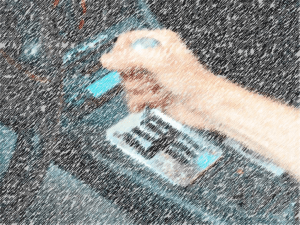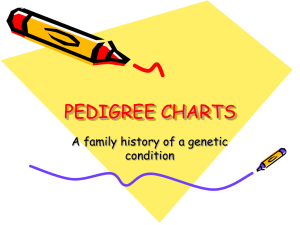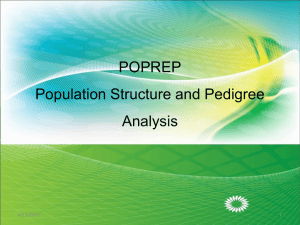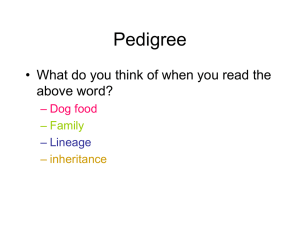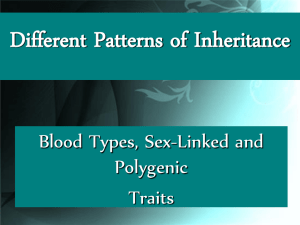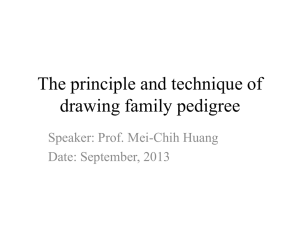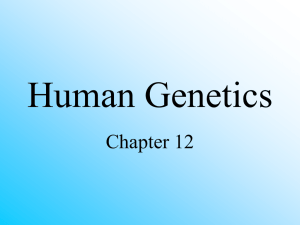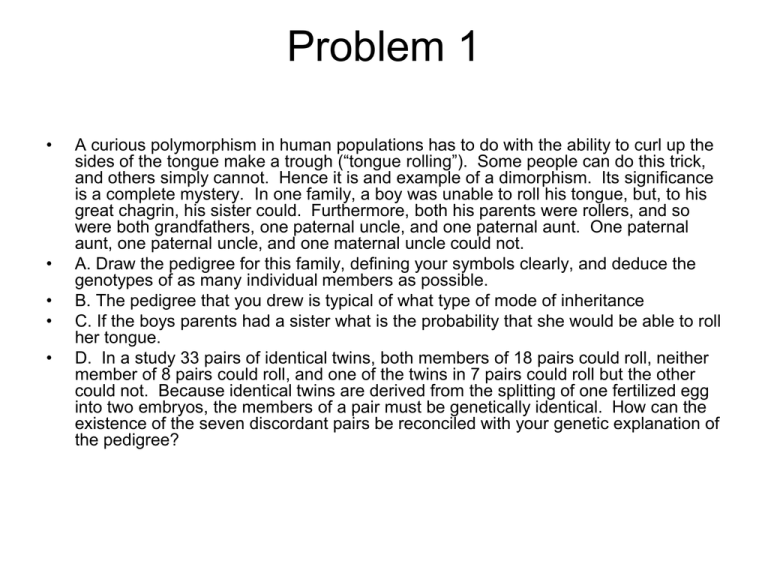
Problem 1
•
•
•
•
•
A curious polymorphism in human populations has to do with the ability to curl up the
sides of the tongue make a trough (“tongue rolling”). Some people can do this trick,
and others simply cannot. Hence it is and example of a dimorphism. Its significance
is a complete mystery. In one family, a boy was unable to roll his tongue, but, to his
great chagrin, his sister could. Furthermore, both his parents were rollers, and so
were both grandfathers, one paternal uncle, and one paternal aunt. One paternal
aunt, one paternal uncle, and one maternal uncle could not.
A. Draw the pedigree for this family, defining your symbols clearly, and deduce the
genotypes of as many individual members as possible.
B. The pedigree that you drew is typical of what type of mode of inheritance
C. If the boys parents had a sister what is the probability that she would be able to roll
her tongue.
D. In a study 33 pairs of identical twins, both members of 18 pairs could roll, neither
member of 8 pairs could roll, and one of the twins in 7 pairs could roll but the other
could not. Because identical twins are derived from the splitting of one fertilized egg
into two embryos, the members of a pair must be genetically identical. How can the
existence of the seven discordant pairs be reconciled with your genetic explanation of
the pedigree?
Answer Problem 1
Draw the pedigree for this family, defining your symbols clearly, and deduce the genotypes of as many individual
members as possible
R/r
If R is roller and r is no roller
-/r
R/r
?
?
-/r
r/r
R/r
R/r
r/r
R/-
R/-
r/r
r/r
R/Sister could roll
parents were rollers, and so were both grandfathers, one paternal uncle, and one paternal aunt
One paternal aunt, one paternal uncle, and one maternal uncle could not
The pedigree that you drew is typical of the autosomal dominant mode of inheritance. It is present in both parents and
offspring. It is also present in both females and males
Answer Problem 1
C. If the boys parents had a sister what is the probability that she would be able to roll her tongue. There is 75%
chance she would be able to roll her tongue.
R
r
R R/R R/r
r R/r r/r
•How can the existence of the seven discordant pairs be reconciled with your genetic explanation of the
pedigree?
•Two possible answers there could be an environmental element affecting the phenotype expression or the
R allele might not be fully penetrant
Problem 2
• Duchenne’s muscular dystrophy is sex linked and
usually affects only males. Victims of the disease
become progressively weaker, starting early in life.
• A. What is the probability that a woman whose brother
has Duchenne’s disease will have an affected child?
• B. If your mother’s brother (uncle) had Duchenne’s
disease, what is the probability that you have received
the allele?
• C. If your father’s brother had the disease, what is the
probability that you have received the allele?
Answer Problem 2
•
A. What is the probability that a woman whose brother has Duchenne’s disease will have an affected child?
A possible pedigree
D/d
D/Y
1/2
Because Duchenne’s disease is Xlinked we know it can only be
inherited from females. Therefore the
maternal grandmother must be a
carrier.
D/d/Y
The probability of passing it on to
the child is 1/2
D/Y
1/8
Probably the child is male is ½ and the chance
of passing the allele is ½. Therefore the
chance of having an affected child is
½*1/2*1/2=1/8
Answer Problem 2
•
If your mother’s brother (uncle) had Duchenne’s disease, what is the probability that you have received the allele?
Same pedigree applies
D/d
D/Y
The probability of passing it on to
the child is 1/2
1/2
Because Duchenne’s disease is Xlinked we know it can only be
inherited from females. Therefore the
maternal grandmother must be a
carrier.
D/d/Y
D/Y
½ is the probability she passes it to you
½*1/2=1/4
Answer Problem 2
•
C. If your father’s brother had the disease, what is the probability that you have received the allele?
A possible pedigree applies
D/d
D/Y
d/Y
D/Y
D/D
0%
Because the disease is rare it is a good assumption that your mother does not have the disease allele.
Therefore because the disease can not be inherited through a male, your chance of getting the disease is
zero or the rate of a new mutation
Problem 3
•
•
•
Here are two human pedigrees. The black symbols represent an abnormal phenotype inherited in a simple
Mendelian manner.
A. For each pedigree, state whether the abnormal condition is dominant or recessive. Try to state the logic
behind your answer.
B. For each pedigree, describe the genotypes of as many persons as possible.
Answer Problem 3
•
A. For each pedigree, state the most like mode of inheritance. Try to state the logic behind your answer.
Most likely autosomal recessive. Occurs
following the mating of two related
individuals and skips a generation
Most likely X-linked dominant. Occurs in
every generation. All males are affected.
Appear to pass only through females
Answer Problem 3
B. For each pedigree, describe the genotypes of as many persons as possible.
Most be X/x because of x/x
Must be a recessive allele
A/-
X/x
A/a
A/A/?
A/?
A/-
A/?
x/Y x/x X/Y X/x
A/a
x/Y
X/-
x/Y
x/x X/Y X/x X/Y X/Y
X/- x/Y X/- X/Y X/Y
x/x
A/a
A/a
x/Y x/Y x/x
x/x
a/a
X/x x/Y x/Y


